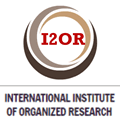Urkund/Ouriginal: Experiences about an unavailable tool for identifying coincidences
Keywords:
ethics of scientific publications, journal articles, data registryAbstract
Introduction: Ouriginal is software that helps detect and prevent plagiarism regardless of language. It brings together the combined experience of Urkund and PlagScan of more than three decades and is trusted by hundreds of companies and educational institutions worldwide. Regarding the work with the Cuban medical journals, it began to be used in 2021, and it was ordered to be used with all the articles to be processed by the end of that year. Recently, the Cuban journals have been denied access to this tool.
Objective: To show the experiences of working with Ouriginal in the Cuban Journal of Health and Labor from August to December 2021.
Methods: A user profile was created in the system. The established procedures for analyzing manuscripts and identifying coincidences were observed. A log of results and a template for editorial analysis of the reports were created. This analysis and the software report are included with the article in the submission for proofreading.
Results: Twenty-eight articles were processed and twenty-six software reports were analyzed, excluding two manuscripts returned for other reasons. All the detected coincidences were investigated, regardless of the percentage they accounted for. Unjustified similarities were not observed, nor were unethical authorial behaviors detected.
Conclusions: Ouriginal was a useful and effective tool for the identification of coincidences and the prevention of possible plagiarism in scientific publication. It is necessary to find a way to access this software again.
Downloads
References
Cárdenas Díaz T. La publicación científica y su contribución a la generación del conocimiento. Rev. Cuba Oftalm [Internet]. 2021 [acceso 30/09/2021];34(1):e1048. Disponible en: http://www.revoftalmologia.sld.cu/index.php/oftalmologia/article/view/1048
Rodríguez-Venegas EC, Zamora-Fung R. Autoría y dilemas éticos en la publicación científica. Rev Cub Med [Internet]. 2021 [acceso 29/09/2021];60(1):e1604. Disponible en: http://www.revmedicina.sld.cu/index.php/med/article/view/1604
Guraya SY. The confounding factors leading to plagiarism in academic writing and some suggested remedies: A systematic Review. J Pak Med Assoc. 2017 [acceso 04/01/2020];67(5):767-72. Disponible en: https://www.ncbi.nlm.nih.gov/pubmed/28507368
Solís G, Cano A, Antón M, Manrique de Lara LA, Galán CR. Plagio y ética en las publicaciones científi-cas. Anales de Pediatría [Internet]. 2019;90(1):1-2. DOI: https://doi.org/10.1016/j.anpedi.2018.10.008
Ruzafa M, González E, Moreno T, del Río C, Al-bornos L, Escandell C. Proyecto de implantación de guías de buenas prácticas en España 2011-2016. Enferm Clin. 2011;2(5):275-83. DOI: https://doi.org/10.1016/j.enfcli.2011.07.013
López A. Herramientas antiplagio: de la suposición a la comprobación. Presentación. Evento científico “PubliCient-2019.” Editorial Ciencias Médicas, La Habana, Cuba.
Our company – Ouriginal. [Internet]. 2022 [acceso 06/02/2022]. Disponible en: https://www.ouriginal.com/our-company/
Ouriginal. Mensaje automático del sistema. [Inter-net]. 2021 [acceso 13/02/2022]. Disponible en: https://secure.ouriginal.com/static/documents/ENG_Ouriginal_Policy.pdf
Downloads
Published
How to Cite
Issue
Section
License
Aquellos autores/as que tengan publicaciones con esta revista, aceptan los términos siguientes:- Los autores/as conservarán sus derechos de autor y garantizarán a la revista el derecho de primera publicación de su obra, el cuál estará simultáneamente sujeto a la licencia Creative Commons Reconocimiento-NoComercial-CompartirIgual 4.0 Internacional (CC BY-NC-SA 4.0) Esta licencia permite a otros compartir el trabajo con un reconocimiento de la autoría del trabajo y la publicación inicial en esta revista (componente BY o atribución). Coincidente con la política de Acceso Abierto, no se podrán hacer usos comerciales de los contenidos publicados por esta revista (componente NC). Se permitirán las obras derivadas (remezcla, transformación o creación a partir de la obra original), siempre y cuando sean distribuidas bajo la misma licencia de la obra original (componente SA).
- Los autores/as podrán adoptar otros acuerdos de licencia no exclusiva de distribución de la versión de la obra publicada (p. ej.: depositarla en un archivo telemático institucional o publicarla en un volumen monográfico) siempre que se indique la publicación inicial en esta revista.
- Se permite y recomienda a los autores/as difundir su obra a través de Internet (p. ej.: en archivos telemáticos institucionales o en su página web) antes y durante el proceso de envío, lo cual puede producir intercambios interesantes y aumentar las citas de la obra publicada. (Véase El efecto del acceso abierto).






